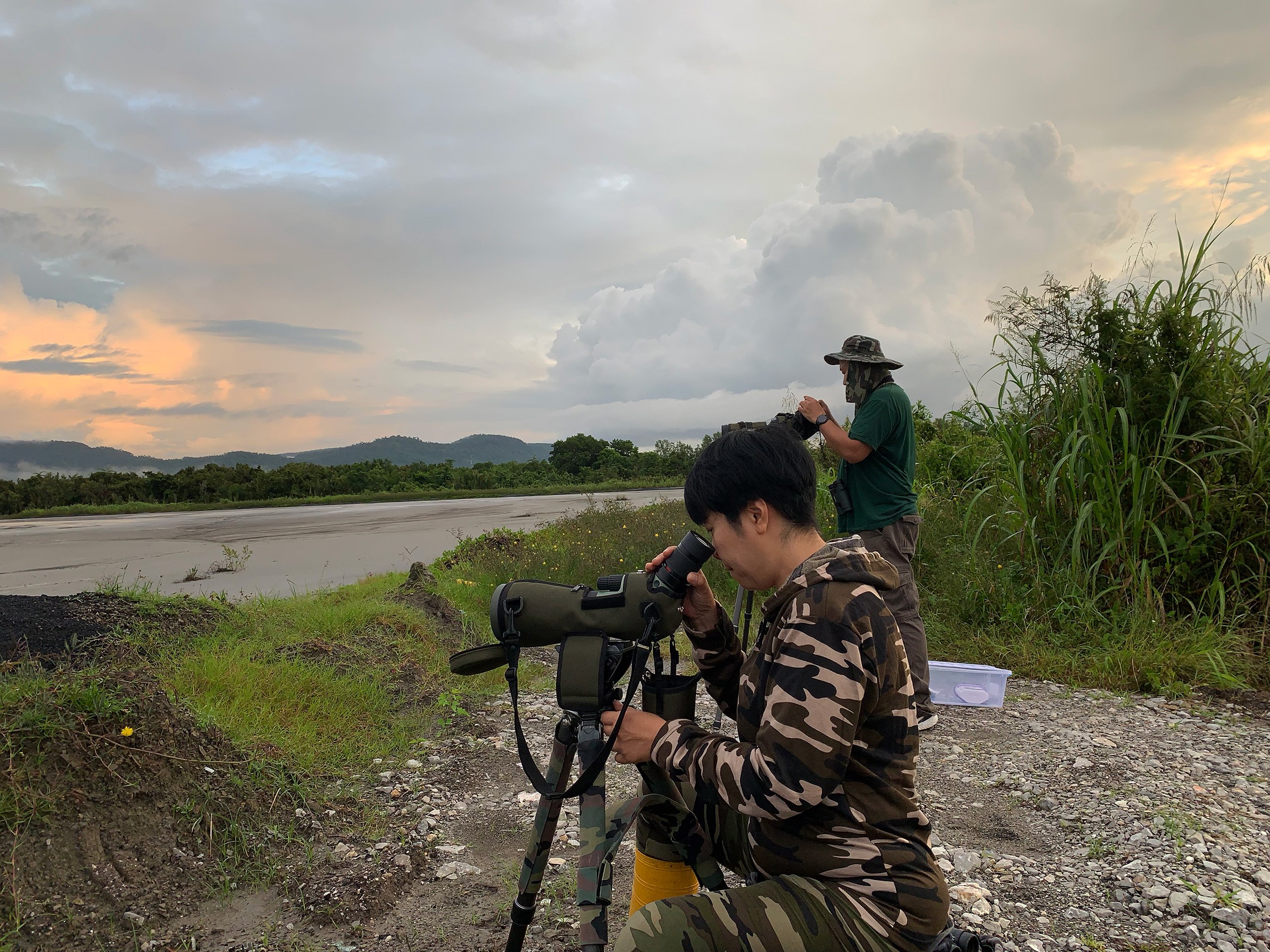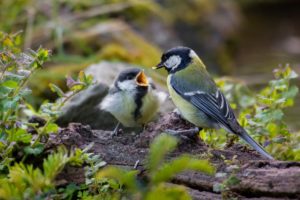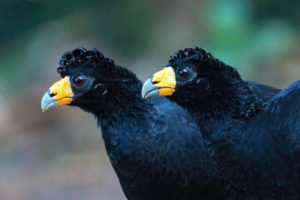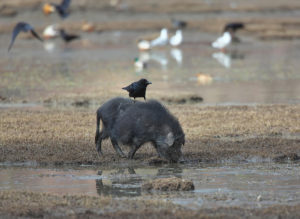The tide comes in quickly. “You have to move, move, move,” says Rose Au. “Within a few minutes, it’s up to your knees!” Coupled with the dangers of getting stuck in the mud or encountering a crocodile, the business of counting birds has never sounded more thrilling.
Au and the other amateur birders of the Malaysian Nature Society Kuching Branch (MNS) in Sarawak, Malaysian Borneo, have been braving these dangers and more for the last 16 years. Their aim: to count the thousands of shorebirds which come to Sarawak every year en route south from their breeding grounds in Siberia.
Their site of choice is Bako-Buntal Bay, the core area of which comprises a scenic 15km half-moon of intertidal mud and sand flats fringed by mangroves and bookended by the sacred forested Mount Santubong and the rocky Bako peninsula.
These citizen scientists’ loyal counting efforts have revealed that the bay is special: as confirmed in a 2021 scientific paper on the bay, it has been attracting ever larger numbers of migratory shorebirds (smallish birds such as sandpipers which mostly feed in the sand and mud of wetlands).
The total number of shorebirds recorded in Buntal Bay (calculated by combining the highest maximum counts per species) remained stable between 2006 and 2019, with a peak of 9,335 birds in 2011. In 2019, the most birds counted in a single day was 8,374.
This is astonishing considering that populations of migratory shorebirds are plunging globally. The trend is even more surprising when drilled down to specific species.
For instance, the global population of the endangered great knot, a species of sandpiper which breeds in eastern Siberia, has decreased by 77.8% over three generations according to Birdlife International.
Yet the number of great knots counted at Buntal more than doubled between 2011 and 2019. The bay has “globally significant populations” of the species, said the lead author of the 2021 paper, scientist Batrisyia Teepol, who is also a shorebird researcher with MNS. Teepol has been studying the site’s shorebirds since 2018.
From 2003, MNS birders also started counting birds roosting inland at high tide, at the man-made ash ponds of the Sejingkat coal power station, built to dispose of ash from the plant. In 2018, Teepol’s single-day count of waterbirds at Sejingkat (8,785) surpassed the seaside location’s highest count. Most notably, in recent years the ponds have been attracting increasing numbers of another threatened shorebird: the Far Eastern curlew.
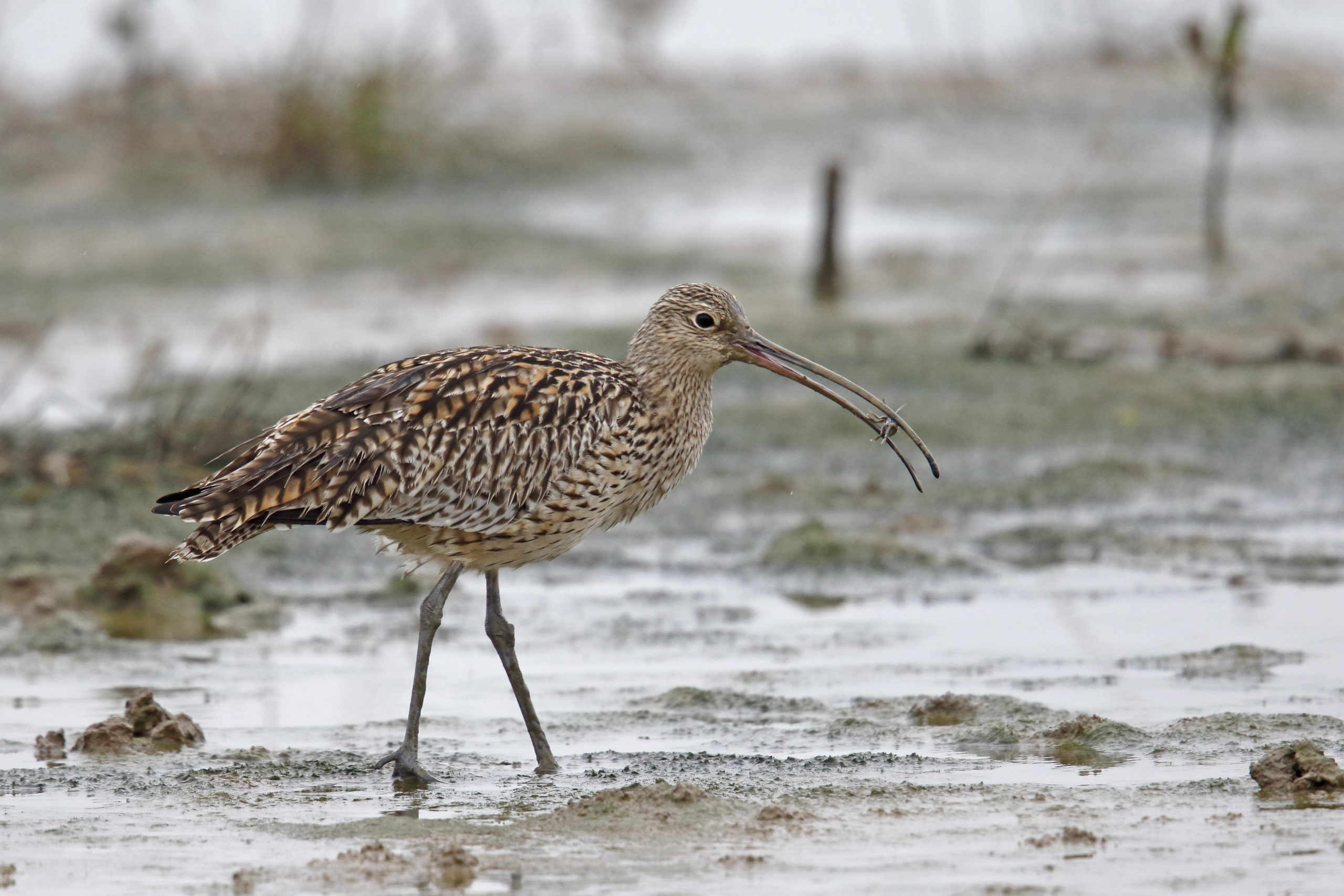
“It is the star of Buntal,” says Teepol, “the bird everyone who comes to Bako-Buntal Bay always looks out for. It is also the largest shorebird in the world.”
Breeding in Kamchatka and northern China, the curlew is globally endangered, its population having declined by 80% in the last 30 years. Yet at Sejingkat, its numbers grew from 660 in 2011 to a record 970 in 2019, the highest number since surveys began in 2003.
What is the secret of Bako-Buntal Bay?
Teepol’s paper suggests several hypotheses for why Bako-Buntal may be bucking the global trend. Though cautious as this has not been confirmed by research, she suggests that birds may be flocking to the bay because the wetland is in better condition than the others they traditionally stop at when flying south, which have been degraded.
Buntal is only one of several pit stops for its visiting shorebirds, which nest thousands of kilometres to the north in Siberia or Alaska. To escape the Arctic winter, they undertake long, tiring journeys to warmer climes in Australia or New Zealand, making the reverse journey in the northern spring.
Along the way, they need to rest and re-fuel several times. This means relying on coastal wetlands rich in energy-giving molluscs, worms and insects.
The birds depend on a bunch of sites as they move from one point to another. If one very important site is badly impacted, then downstream will be affected.Yong Ding Li, Birdlife International
The migration route, known as the East Asian–Australasian Flyway, spans 85 million square kilometres, and supports more species of bird than any other flyway. It is also the one most threatened by land reclamation and degradation.
There are many and complex possible reasons why migratory bird numbers go up and down at a given site, says the 2021 paper’s co-author, Yong Ding Li, who is the Asia-Pacific regional coordinator for Birdlife International.
“But there are things we know for sure,” he says. “The birds depend on a bunch of sites as they move from one point to the other point. If one very important site is badly impacted, then downstream will be affected to some extent.”
Connecting the dots along the flyway
So, what is the state of the sites to which the Buntal shorebirds are linked?
To figure this out, Teepol started systematically looking for ‘clues’ in 2019. At the ‘bird-counting’ sandbar in Buntal, safely distanced from rising tides and crocodiles, she would strain through her spotting scope, trying to identify tiny flags among the masses of birds.
One 2019 day turned out to be a good one for finding flags, which are attached to the birds’ legs during monitoring studies along their migration route. She spotted four – all on great knots – which she carefully noted down: “BW/ Right tibia flag, metal ring left tibia/AU7; BW/AK2; BY/AVF; BY/X1”.
This cryptic code was in fact precious evidence. It indicated that these individual birds were caught and flagged in Chongming Island, China and Kamchatka, Russia, respectively.
Because satellite tracking is expensive, leg flags and neck bands are commonly placed on birds to help the study of their routes and behaviour along the flyway. The flags have different colours and letters or numbers. Spotters then share their sightings on Facebook.
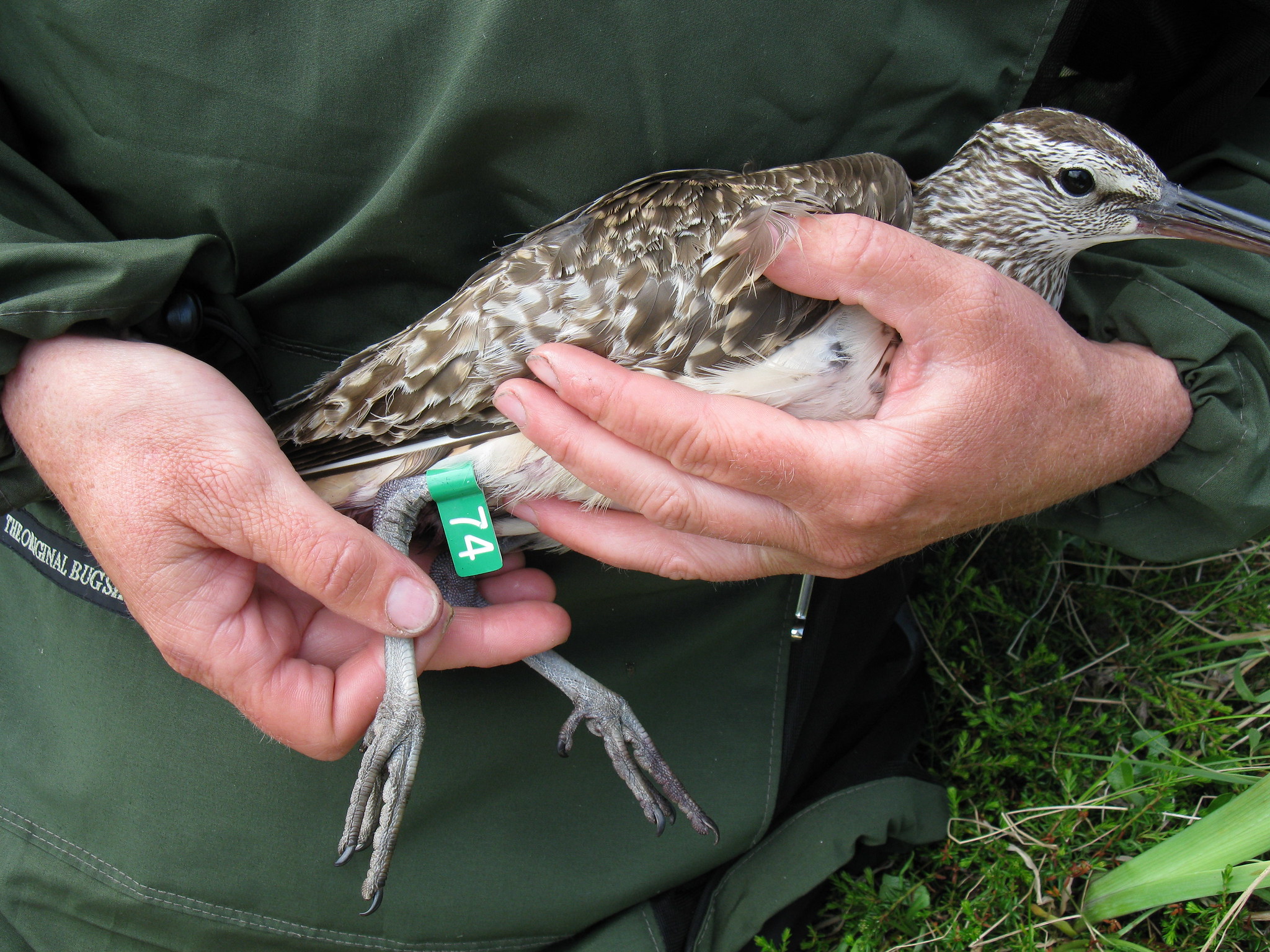
Compiling these and previous flagged bird observations made from 2003 to 2021, Teepol and MNS volunteer Ng Jia Jie have been able to confirm that birds recorded at Buntal had visited 17 or so wetlands along the East Asian–Australasian Flyway. Of these, the Chinese sites of Chongming, Yalujiang and Tangshan are located in the Yellow Sea-Bohai Gulf region, a critical halfway point in the birds’ exhausting long-distance migration.
But the region’s once extensive mudflats are now 30% their former size. Birdlife’s Yong says “infrastructure development and other threats on the Yellow Sea coastline have driven the extensive loss and degradation of intertidal mudflats on the China and Korean coasts.” This is despite China-wide restrictions placed on coastal reclamation, and the 2019 listing of the Yellow Sea-Bohai Gulf as a World Heritage Site.
The last decade has seen a steady decline in the global population of the great knot, at least based on monitoring work done by researchers at various wetlands in Australia – where a large proportion of the world population spends the winter. Yet from around 2009, the number of great knots counted at Southeast Asian sites appeared to increase. A possible reason for this, says Yong, could be the loss of critical refuelling sites in the Yellow Sea, meaning many birds simply did not have enough energy to fly all the way to Australia.
Protecting Bako-Buntal Bay
Yong lists three mega port cities close to the Chinese coastal sites linked to Buntal: Shanghai, the world’s most populous city and busiest container port; Dandong, the economic gateway to North Korea; and steelmaking hub Tangshan.
Buntal is a world away from these metropolises. Two lightly populated fishing villages perch on either end of the bay. Aside from fishing, the other main economic activity is burgeoning tourism, as city folks drive to the villages to enjoy seafood on the beach.
The importance of Buntal for migratory birds was internationally recognised back in 2007, as part of a larger 3,590-hectare Important Bird & Biodiversity Area (IBA). Then, in 2013, based on data collected by MNS citizen scientists, it was recognised as an important Network Site on the East Asian–Australasian Flyway, Malaysia’s only such site.

Bako-Buntal Bay has been managed by the Sarawak Forestry Corporation (SFC) since 2017, says Oswald Braken Tisen, the SFC’s deputy chief executive officer. Oswald says the SFC has been involved in the bird counts, engages with local communities on threats such as hunting (which has since stopped), and works with the Sejingkat power plant to ensure the longevity of the ash ponds.
Importantly for bird conservation, Oswald says, “our [Sarawak] Premier gave us the green light to [designate] Bako-Buntal Bay as a totally protected area, including the fringe mangroves as well as the mudflats and sea area.”
While the exact type of protection has not been decided, Oswald says it is critical that local communities benefit, whether through continued sustainable harvesting of natural resources like fish or clams, or sustainable tourism activities like birding boat trips or seafood restaurants. Through such sustainable use of Buntal, says Oswald, “the birds can benefit, the community can benefit.”
He points out that the Kampung Buntal restaurant strip is well-known for another Buntal migratory star: the Chinese egret. Among the rarest herons in the world, the species nests in the Yellow Sea and Russia. At Buntal, perched on traditional fishing stilts, the white birds are strikingly photogenic.
Future plans for Buntal include a mangrove education centre and tourist walkways, says Oswald. But he says that any development would maintain the integrity of the birds’ habitat and involve stakeholder consultation.
Key to all this is raising local awareness of conservation, he adds, particularly with the help of NGOs. MNS, along with the SFC, are now engaging with village management committees, fishers and schools to teach them about the importance of the habitat. But they are not starting from scratch.
“The fishers actually know about the birds,” says Teepol. “They can differentiate them from their size and have local names for them.”
This article is a collaboration with the Malaysian environmental journalism site Macaranga.
